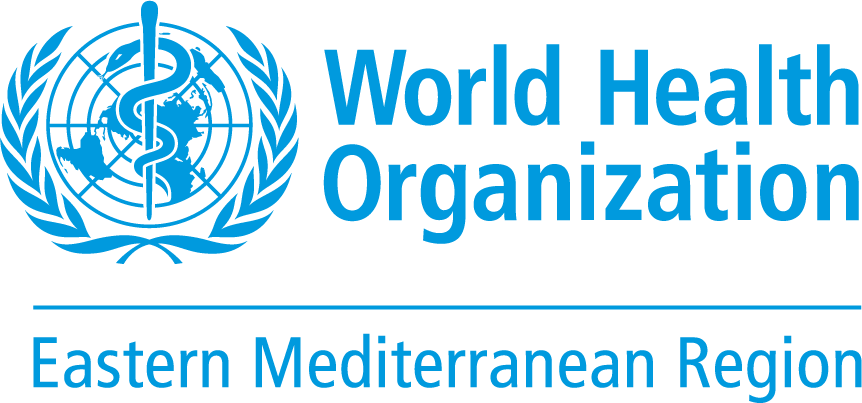World Health Day 2013 is being celebrated this year under the theme of “hypertension”, otherwise known as high blood pressure. The intention of this year’s campaign is to: raise awareness of hypertension and promote behavioural change with respect to primary prevention, improve the chances of early detection and promote effective management for patients. Although hypertension is a serious health problem in the Eastern Mediterranean Region and globally, it is preventable and treatable.
Globally, hypertension is estimated to cause 7.5 million deaths annually, representing more than 12% of all deaths. It increases the risk of heart attack, stroke, kidney failure, blindness and other vascular conditions. WHO estimates that high blood pressure affects about 40% of adults aged 25 years and older.
On 7 April, WHO will launch the global World Health Day campaign to persuade policy-makers, the regional and international community and other stakeholders to prioritize prevention, early detection and management of hypertension in national policies, programmes and activities. It also aims to involve communities and individuals in order to increase public awareness of the problem. The public awareness campaign will focus on preventive interventions that reduce the risk of hypertension.
An online information package has been developed for the campaign. Event organizers can download media and communication products in adjustable formats to enable language and cultural adaptation according to local contexts. The campaign will include a wide range of web, email and multimedia interactive products, with portals for collection of feedback and on-line updates.
This campaign is a year-long activity extending beyond 7 April to give WHO and Member States the opportunity of implementing sustainable activities over an expanded period of time. Communities, nongovernmental organizations and individuals are encouraged to develop plans with a number of booster events to maintain momentum in conducting events throughout the year.
Hypertension
High blood pressure and physical activity
Hypertension
Hypertension
Regular physical activity [1] is one of the first treatments recommended to lower blood pressure and improve cardiovascular health, among both the general population and those people with hypertension.
What is the link between high blood pressure and physical activity?
Exercising on a regular basis has many health benefits and protects people against high blood pressure and cardiovascular diseases. Studies show that by reducing systolic blood pressure by 5 mmHg, deaths from strokes can be reduced by 14% and deaths from coronary heart disease can be decreased by 9%[2]. Regular exercise is key to preventing and treating hypertension.
What is the prevalence of physical inactivity in the Region?
Physical inactivity among the adult population constitutes a real problem in the Eastern Mediterranean Region. Low levels of physical activity have a direct link with weight gain, which in turn increases the risk of raised blood pressure. In some countries of the Region, the prevalence of physical inactivity can reach 70% of the adult population.
The situation among adolescents is not encouraging. Data on the combined risk factors of overweight and lack of physical activity show that adolescents do not exercise sufficiently.
What is the recommended amount of exercise?
Physical activity refers to any bodily movement which uses energy and is performed as part of daily activities, such as household chores, walking, certain work and leisure-time activities, games, sports or planned exercise.
For every age bracket, WHO recommends levels of physical activity for the prevention of chronic diseases such as cardiovascular diseases, stroke and hypertension.
Children and youth aged 5–17 years
- Children should accumulate at least 60 minutes of moderate-to-vigorous intensity physical activity daily.
- Amounts of physical activity greater than 60 minutes provide additional health benefits.
- Most of the daily physical activity should be aerobic. Vigorous intensity activities should be incorporated, including those that strengthen muscle and bone, at least 3 times per week.
Adults aged 18–64 years
- Adults should accumulate at least 150 minutes of moderate intensity aerobic physical activity throughout the week or do at least 75 minutes of vigorous intensity aerobic physical activity throughout the week
- For additional health benefits, adults should increase their moderate-intensity aerobic physical activity to 300 minutes per week, or engage in 150 minutes of vigorous intensity aerobic physical activity per week, or an equivalent combination of moderate and vigorous intensity activity.
- Muscle-strengthening activities should be carried out on 2 or more days a week.
Adults aged 65 years and older
- Older adults should accumulate at least 150 minutes of moderate intensity aerobic physical activity throughout the week or do at least 75 minutes of vigorous intensity aerobic physical activity throughout the week.
- Aerobic activity should be performed in sessions of around 10-minutes duration.
- For additional health benefits, older adults should increase their moderate intensity aerobic physical activity to 300 minutes per week, or engage in 150 minutes of vigorous intensity aerobic physical activity per week.
- Older adults with poor mobility should perform physical activity to enhance balance and prevent falls on 3 or more days per week.
- Muscle-strengthening activities, involving major muscle groups, should be done on 2 or more days a week.
[1] Physical activity is any bodily movement produced by the skeletal muscles that uses energy. (WHO)
[2] San Francisco burden of disease and injury study. Determinants of health, high blood pressure: what can be done?




